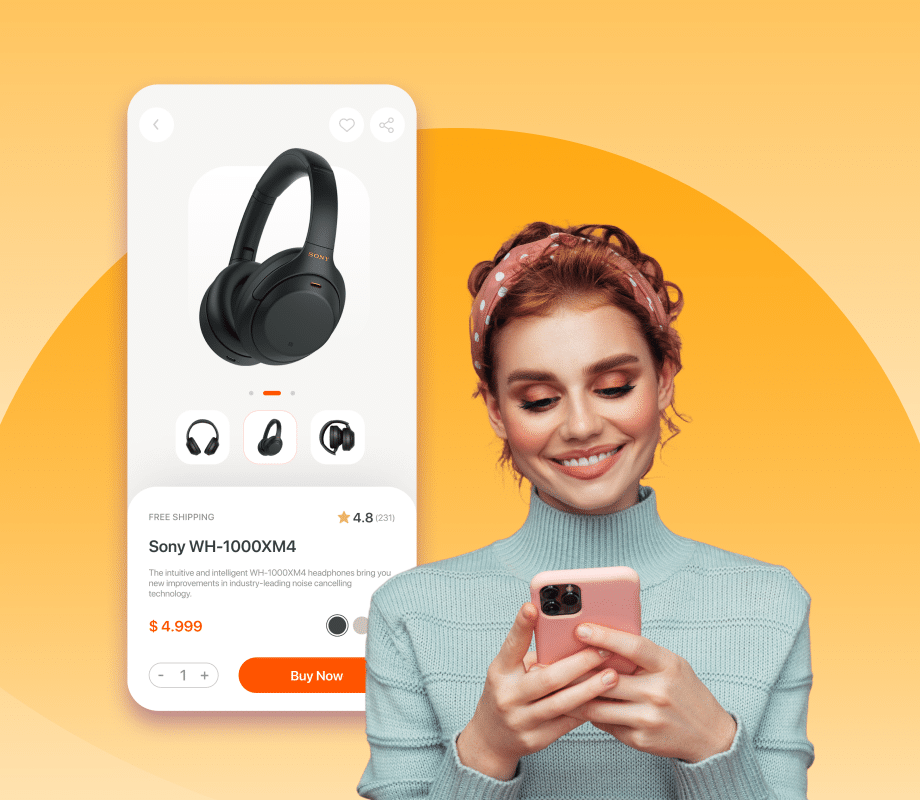From Segmentation to Individualization – Part 2
Part one of this series talks about the limitations of segment-based personalization.
Post-pandemic, customer loyalty toward brands has gone down in the US. Consumers are more likely to buy products from a brand or marketplace based on value, convenience, and availability, rather than wait for the product to be back in stock or on sale on their favorite brand site.
This is because the eCommerce world of today is crowded, and shoppers are spoiled for choice. Every company, be it a big brand with a global presence or a small-scale brand, is selling online. Consumers have the pick of products and brands reflecting their values, whether it is about being a global leader or cruelty-free or sustainable.
Moreover, most online brands and marketplaces have similar merchandising and marketing strategies these days—cart abandonment emails, first-time purchase offers, and recommendations for similar products, cross-sell, and products frequently bought together, among others.
So, what can a business do to stand out and catch a consumer’s attention? How can they ensure that their products are not lost in the world wide web, like Revlon recently experienced?
Hyper-personalization Is Key to Reducing Churn
Engaging customers with the right content and building individualized and relevant shopping experiences are now the best way to increase conversions and revenue and reduce the loss of customers. Though “focus on the customer” is a much-abused cliché, it is now the do-or-die strategy for brands and marketplaces.
Delivering hyper-personalized experiences is a must, so that more and more users come back to you for the shopping experience and not just the products or prices. Wouldn’t you keep returning to the footwear shop where the salesperson remembers what you bought last and what your favorite brands are, tells you which footwear looks better on you, and alerts you about an upcoming sale on some brand or product types?
In fact, 32% of US consumers would stop favoring a brand after just one bad experience, according to a PwC study.
With the number of changes user behavior has undergone in the past two years, segmentation-based personalization as the go-to marketing solution is indeed outdated. Today’s consumer can surprise you with their variety of choices in purchases, and their behaviors and needs are evolving at a fast pace, thereby making it difficult to put them in restrictive cohorts.
What you need now is segments of one, i.e. individualization.
Machine Learning Has Revolutionized Personalization
It’s true that seamless omnichannel personalization can be delivered only after a user visits one of your business channels. Without any direct contact, you are dependent on third-party data-based segmentation to target the user.
Your starting strategy may be to deliver targeted adverts to the user segment on search engines, on websites that use Google Ads or Microsoft Advertising, or via ad-enabled apps.
So, segmentation is useful to acquire a customer or get them to interact with one of your channels. But to deploy one-to-one personalization, you need the capacity to understand your customer at an individual level and deliver hyper-personalized experiences to them in real time.
Thanks to machine learning algorithms, companies now have access to the technology necessary to do this at scale, to process and utilize the zettabytes of data sitting idle in your database.
ML algorithms help you understand every customer as an individual. They provide an up-to-the-minute view of the shopper’s preferences in products, brands, time, channels, purchase history, browsing history, search terms, etc. This ensures that you are able to deliver personalized experiences for the individual in real time.
AI-powered personalization can help you to not only direct consumers to products that are right for them, but also orchestrate their journeys by guiding them through your products with the right offers, recommendations, and campaigns at the right time.
So, machine learning allows you to help your customers enjoy their shopping experience by engaging with them in real time, at all their touchpoints with your brand, across devices and marketing channels. You can personalize search, content, emails, product discovery on homepage and category pages, offers and incentives, in-store experiences, marketing campaigns—you name it, and it can be done.
But only with the right personalization engine and definitely not just with segmentation.
Algonomy’s algorithms, for example, use configurable strategies from a library of over 150 to surface the most relevant products, content, navigation, and search experience. This helps you individualize every user’s journey.
Read more about Algonomy’s Omnichannel Personalization Suite and get in touch with us for a demo.
This is part two of a three-part series on the importance of individualized customer experiences in eCommerce. The third part will discuss use cases of how businesses can achieve hyper-personalization.
 in Sweden from 7 - 8 October 2025. Pre-book a meeting to connect with our
product experts.
in Sweden from 7 - 8 October 2025. Pre-book a meeting to connect with our
product experts.










